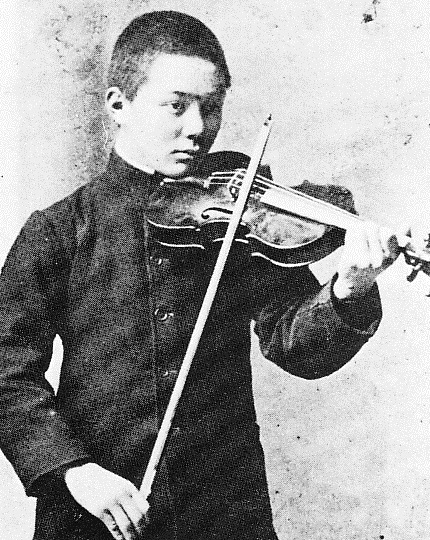Born in the Kitaakita District, Akita, 15 December 1893
Died on 29 October 1945
- Narita was a member of the “Nursery Rhyme Movement,” a movement in art education in Japan during the Taisho period. Narita and the other composers in this movement wrote influential children’s songs partly inspired by Western nursery rhymes.1
- Narita graduated in 1917 from the National School of Music in Tokyo,2 and subsequently studied music in Berlin from 1922-1926. He was one of several Japanese composers who visited Germany and other Western nations to music in the 1920s-40s.3
- In the early twentieth century, Japan saw a flourishing movement of new poetry for children, often disseminated in literary journals for children. Narita’s music was sometimes also distributed this way. In her introduction to Yuki Ohta’s A Rainbow in the Desert: An Anthology of Early Twentieth-Century Japanese Children’s Literature, Joan E. Ericson tells how the text of “Canary,” one of Narita’s well-known songs, was first published in the journal Akai tori in 1918, a few months later, the same journal published Narita’s song setting of the poem. Ericson refers to Narita as “a famous composer of children’s songs.”4
Sources
- Eiko Konoma, “Creativity in Music Education from the 1890s to 1930s in Japan,” in Creativity in Music Education, ed. Ai-Girl Tan, Mayumi Oie, and Yukiko Tsubonou (Singapore: Springer, 2018), 103.
- Japan Echo, Vols. 5-6 (Japan: Japan Echo Incorporated, 1978), 65.
- Alison Tokita, “Japanese Music Students in Germany and Austria, 1880-1945,” in Musical Entanglements Between Germany and East Asia: Transnational Affinity in the 20th and 21st Centuries, ed. Joanne Miyang Cho (Singapore: Springer, 2021), 74.
- Joan E. Ericson, introduction to A Rainbow in the Desert: An Anthology of Early-Twentieth-Century Japanese Children’s Literature, trans. Yuki Ohta (Armonk, NY: M.E. Sharpe, 2001), xiii-xiv.

